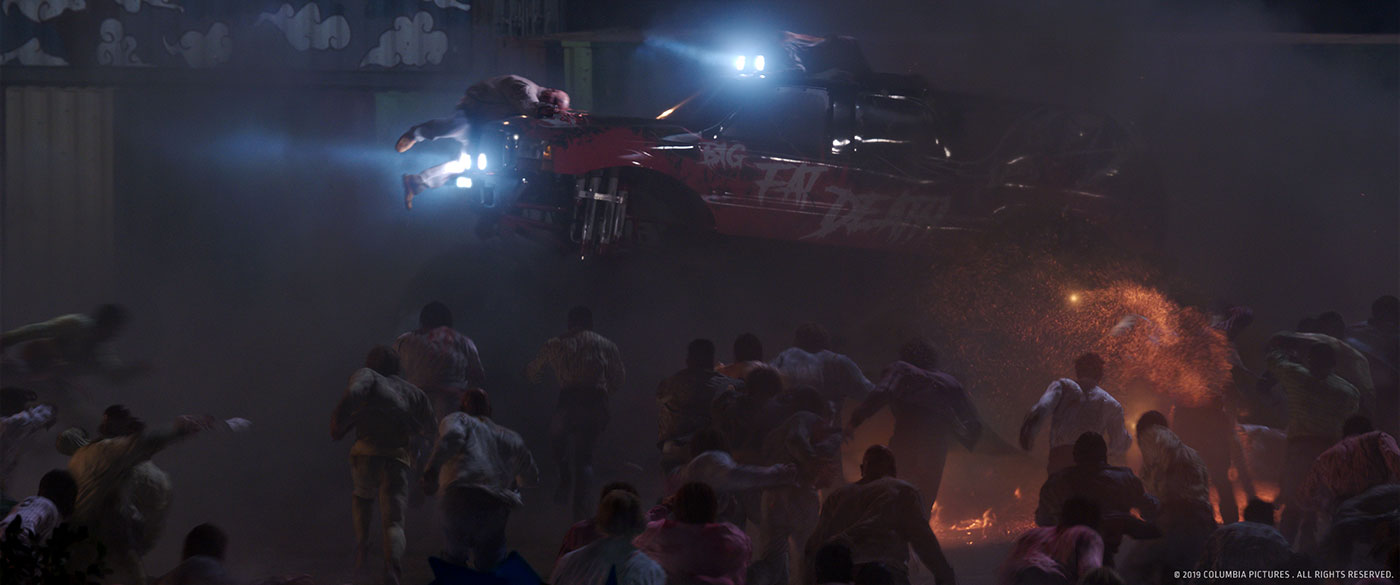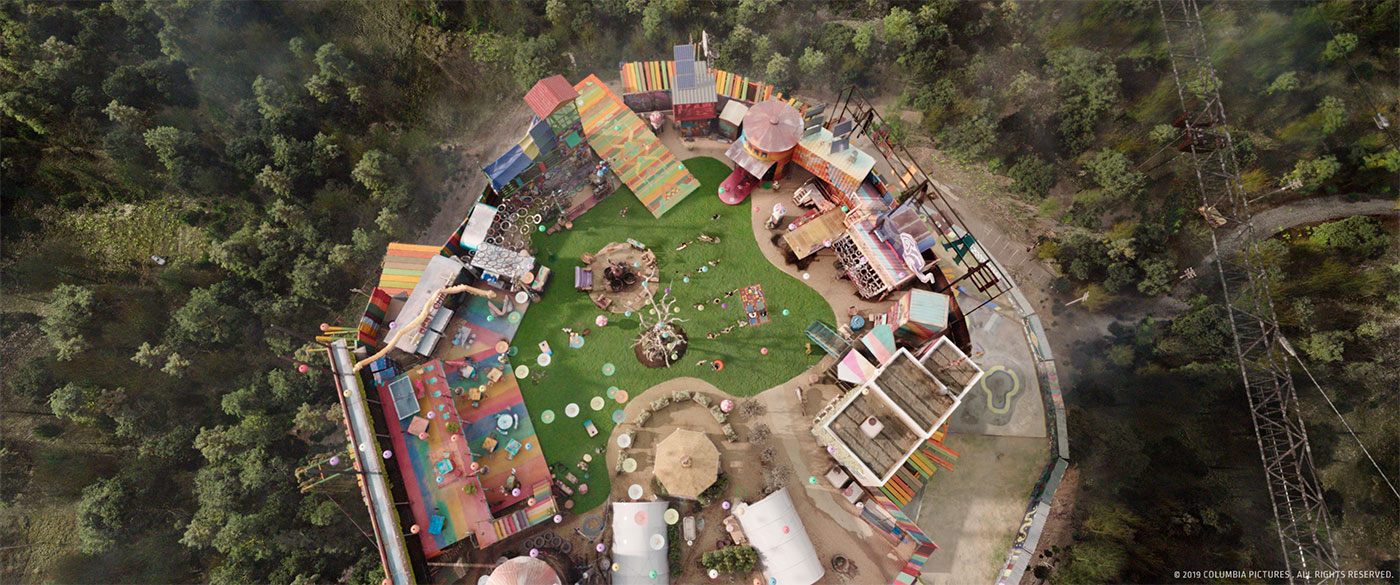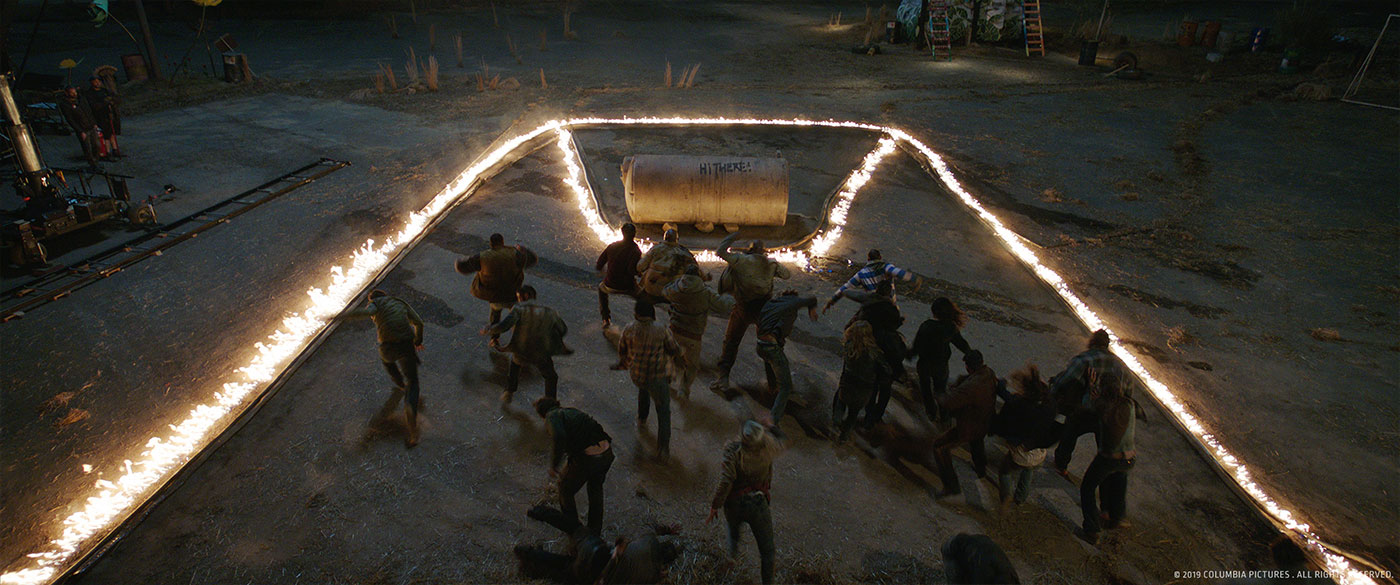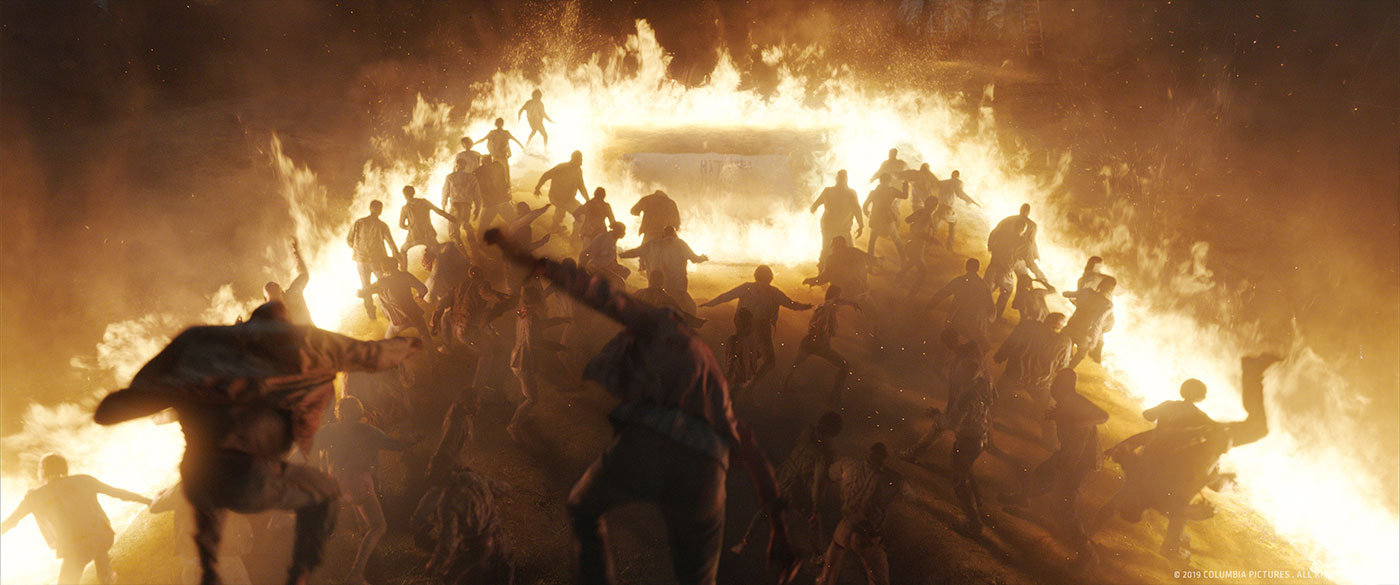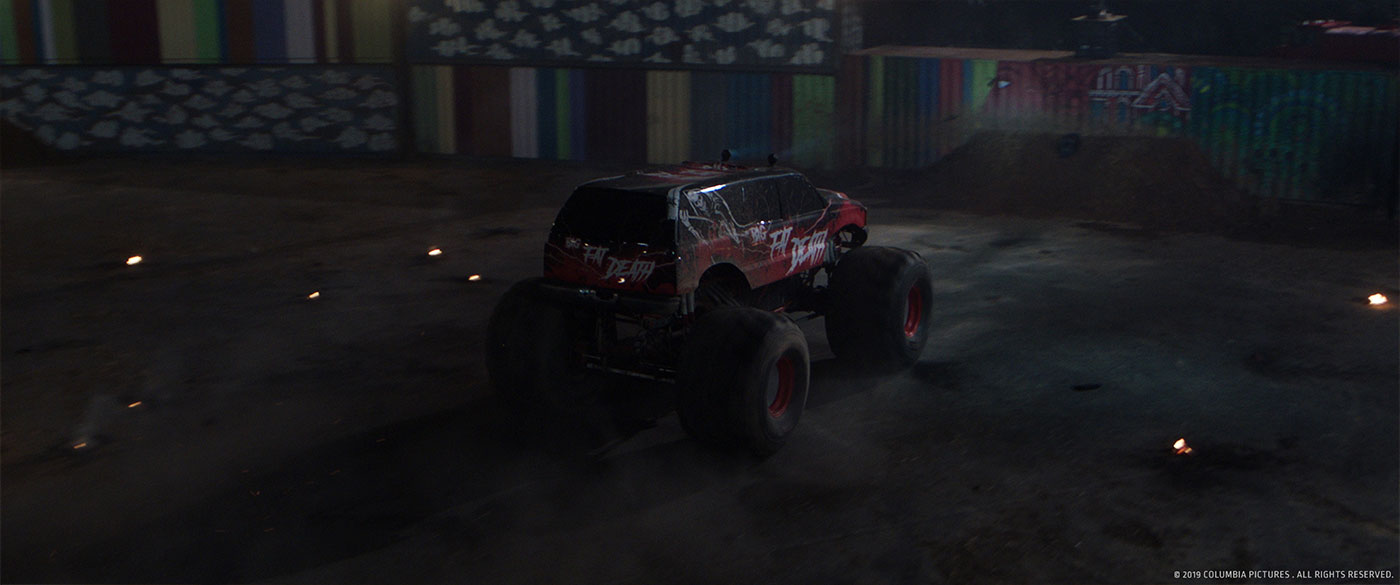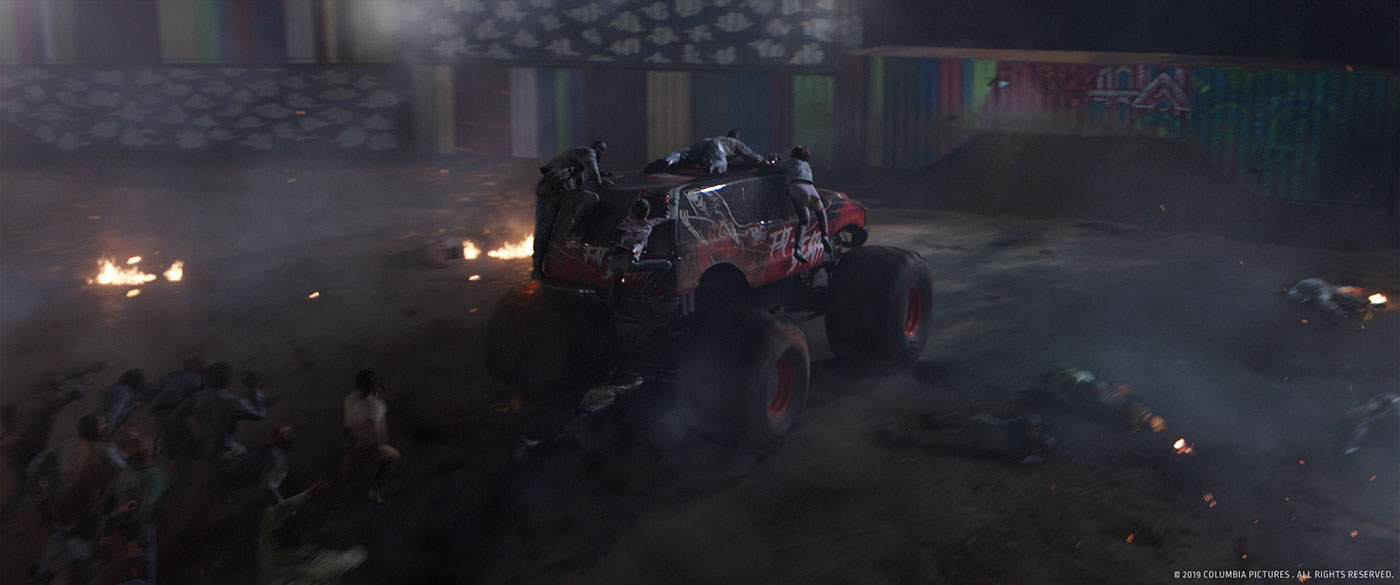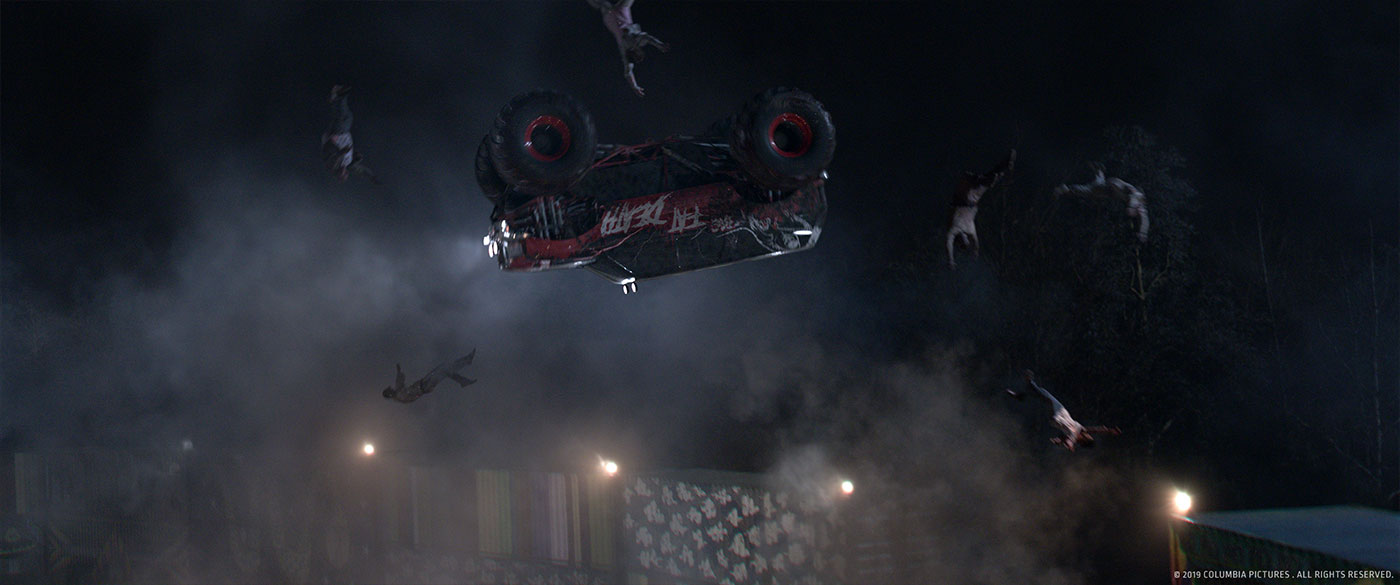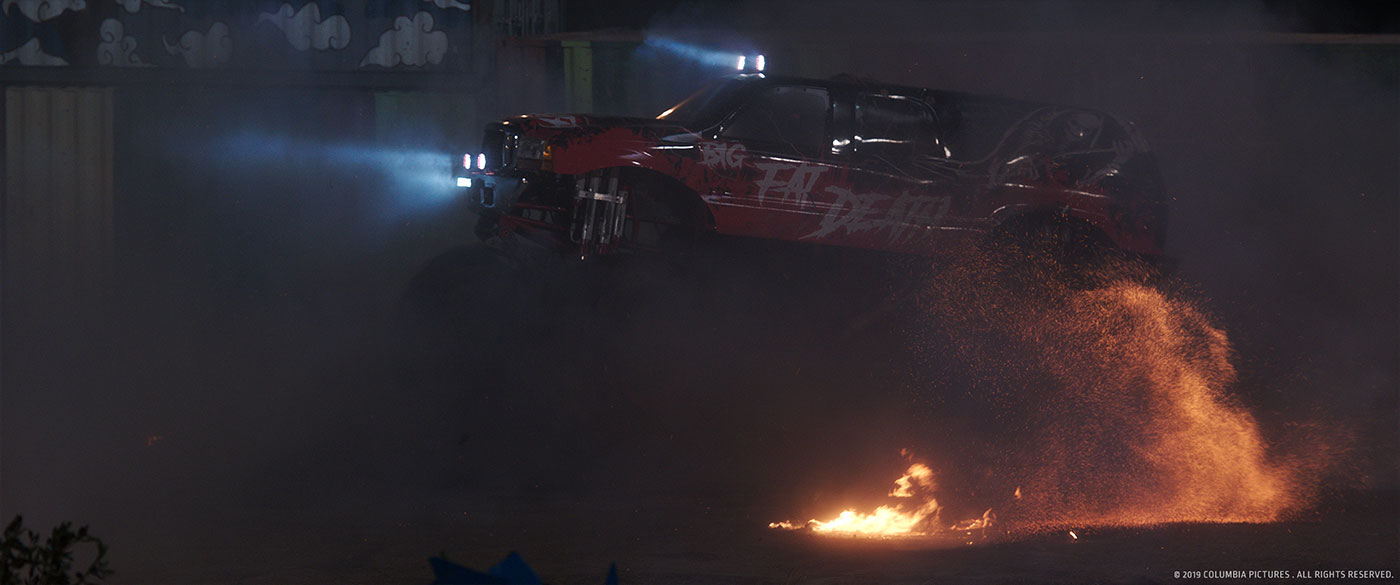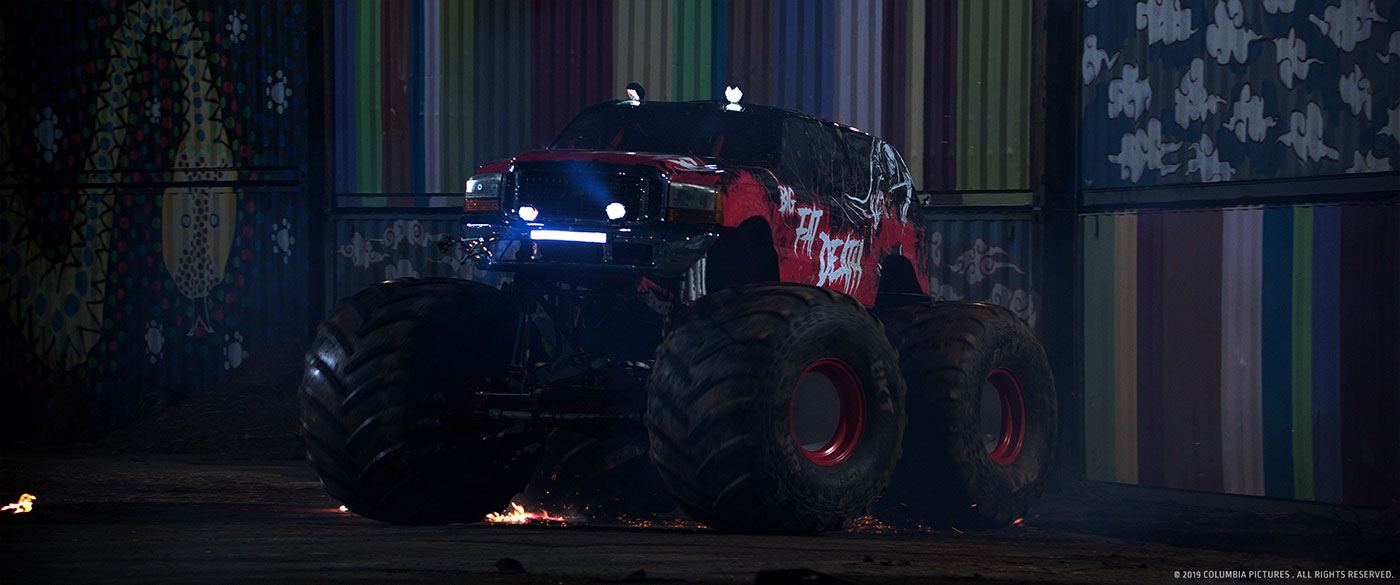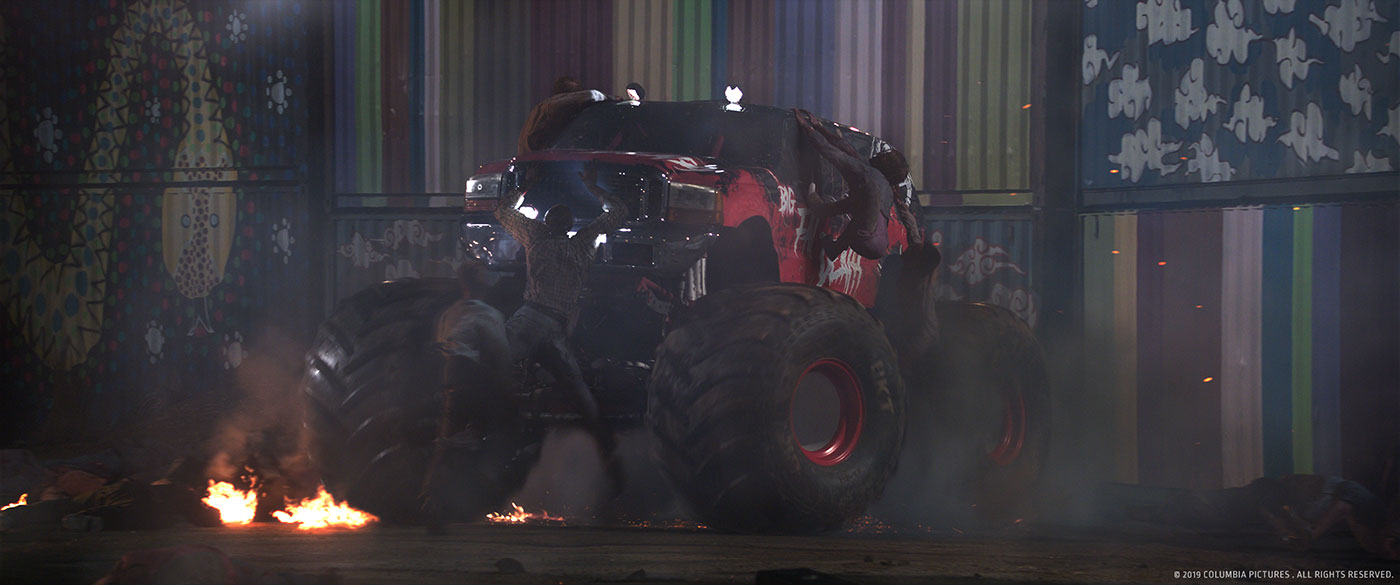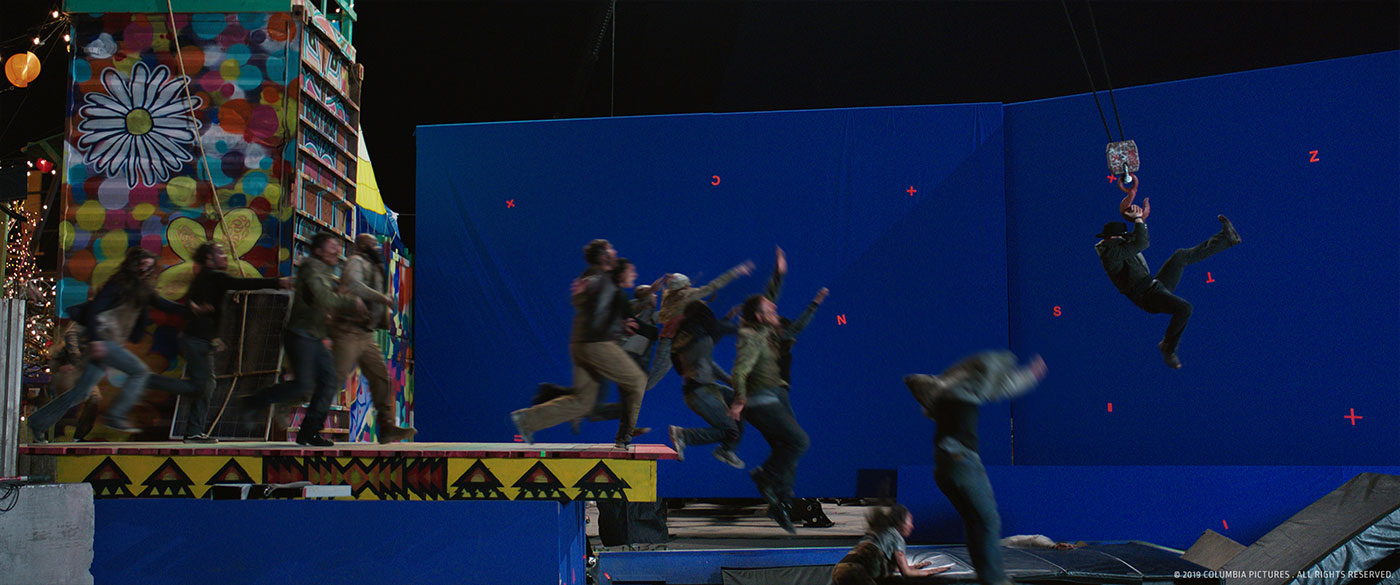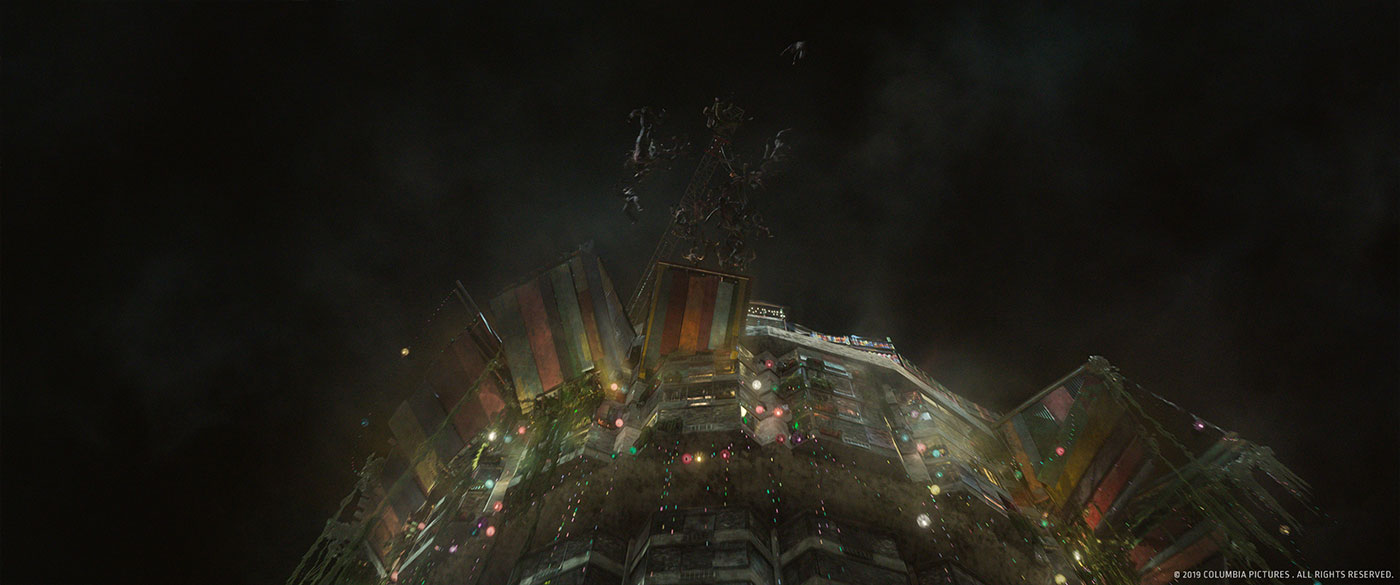Mo Sobhy started his VFX career in 2003 at Framestore. He then worked at MPC and Cinesite before joining Rodeo FX in 2019. He worked on many films such as X: FIRST CLASS, GODZILLA, BATMAN V SUPERMAN: DAWN OF JUSTICE and STRANGER THINGS.
What is your background?
I completed a degree in BA Computer Animation a good 16 years ago now. I’ve been working in Film ever since. I started as a generalist in the good old days when you did everything, and worked my way up through the CG pipeline. Eventually making it as a CG Supervisor, DFX Supervisor and finally where I am now.
How was the collaboration with director Ruben Fleischer and Overall VFX Supervisor Paul Linden?
We absolutely loved working with ZOMBIELAND’s creative team. For the first half of the project we worked extensively with Paul Linden to establish the look and story that Ruben was after. Very soon after, Ruben joined us and became a member of the VFX team. We were directly working with Ruben, who joined as on all the client calls. Paul continued to support and guide us through to the end. It was a great collaborative experience working directly with Ruben. With a short time to deliver the show, it allowed us to understand exactly what story points Ruben was trying to put across and what was visually most important for him. Resulting in the most honest and direct representation of what Ruben envisioned.
What was their expectations and approach about the visual effects?
This isn’t your classical big visual effects movie. Ruben wanted to make sure that the visual effects supported the story without looking over the top. We were steered away from the classical VFX look that would usually be found in typical Marvel or DC movies. We aimed for a more raw and practical look. Something that could have been shot on set.
How did you split the work amongst the Rodeo FX offices?
The beauty of having multiple offices is that you get to work with talented artists from around the world with a broad range of skills, experiences and aesthetics, all resulting in a richer piece of work. More specifically, we had a killer FX team in Munich supporting out Montreal office and a comp team in Quebec helping us race to the finish line. The work was divided based on the type of work and not sequence.
What are the sequences made by Rodeo FX?
Other than a few smaller sequences at the beginning, we looked after the whole third act and any shots that featured Babylon or a herd of zombies.
How did you work with the art department to design the various environments?
Luckly for us, we received pretty clear reference and mood boards from Paul and Ruben at the beginning of the show. For that reason, we felt that we can start building straight away. We needed to narrow our options when it came specifically to building Babylon, so we worked with the art department to conceive a wedge of possible looks for Ruben to choose from before committing to such a big build. We such a tight timeline it was invaluable.
Can you tell us more about the creation of Babylon?
Babylon needed to exist both as a set extension and a full CG asset. The ground level of Babylon existed as a partial set on location. The building was also shot on location but was half the height. Another practical set that was built and shot was the hippy living space, that would ultimately need to go on top of the tower. We ended up having different practical elements of Babylon that we needed to jigsaw together before we could extend it.
Our first task was to create CG replicas of the practical set pieces, from plates and an extensive reference shoot. We then doubled the height of the building, connected all the CG versions of the practical pieces and started on the actual set extension. We used the already build hippy top set to inspire the rest of the extension. We built hippy defenses around the top of the tower to keep the pesky zombies out as well as giving the tower a lived but abandoned feel. The final element was the view from the top of the tower looking out.
After extensively discussing the view with Ruben, we had a good idea of what we needed. We would need a day and night version. The night version had to be without artificial lights like street lights to give the post apocalyptic feel that Ruben was after. It also need to feel over run with forest and vegetation. Early on, we decided that we needed to shoot for the best result. We hired a drone and did a few scouts around the outskirts of Montreal. We were able to send the drone to an exact GPS location and height. Ruben chose one of the locations. We went back to reshoot it using the x7 a full frame drone camera as tiles, giving us the best possible quality, resolution a coverage. The night shoot was done just after sunset but before the street lights switched on, and graded it after for night. On top of what was shot, we worked with DMP to push the abandoned feel.
How did you create the long shot that starts on the ground and ends on the top of the Babylon tower?
Due to the extensive build of Babylon, tackling this shot wasn’t too challenging. Other than adding our Babylon environment to the plate, we also needed to do a camera takeover, as the practical camera only travelled as height as the original height of the tower. We needed to continue the camera up to match the new tower height. From that point on it was an exercise in assembly.
The final sequence involve tons of zombies. How did you create and animate the crowd?
Developing the herd of Zombies was the most challenging part of this project. A classic crowd shot usually contains thousands of agents so you get away with not having to obsess about the finer details, usually needed for close ups. Our zombie herd was too small, with close ups, to do as crowd comfortably, and too large to handle via animation. So we had to develop a custom hybrid system within Houdini that allowed automated, intelligent crowd animation with a lot of input from animation and mocap. We worked with GameOn to do an extensive MoCap shoot for this. By that stage, we had a rough edit so we knew what the zombies had to do. It ranged from walking, running, jumping, falling, grabbing and reaching. With how close the shots were, we needed to insure that we didn’t feel any replication or patterns in their movement. We needed multiple takes and variations for each action. All these were fed into our custom crowd system to be used intelligently based on needed behaviour and what the individual agent was doing at the time. So for example as the zombies run closer to the truck, the system flags this and their behaviour changes to them try to grab and climb the truck.
We had an added complication where the zombies needed to react with the truck aka The Big Fat Death. As part of the story, the truck is driving around mowing zombies in the way. We needed to add a physically based ragdoll system to take care of this. So for example, while a zombie is running, it gets hit by the truck. The second the truck hits the zombie, it switches from crowd to the ragdoll system resulting in an accurate physical reaction where the zombie is thrown in the air. The zombie might collide with another zombie which would trigger another ragdoll interaction. The first zombie that was hit by the truck will eventually land on the ground. That’s when the crowd system takes over again and a weighted decision is made: does it stay dead or was it just a flesh wound, and therefore the crowd systems triggers the agent to stand up and run again.
Another challenge that came with having such close herds of zombies, is that we needed a big number of zombie variations so the audience didn’t see lots of repeated zombies. We started off with an extensive reference shoot of the 8 real zombie actors. From there, we made as many texture and groom variations as possible, and allowed the crowd system to make many variations as possible with the provided building blocks.
Can you tell us more about the various FX work such as the fireworks?
The fireworks were done entirely in Comp. We only used FX for the obvious cannabis and smiley face fireworks. The fireworks were taken from a video shot by one of our artists at a firework event. We turned them into individual elements allowing us to create custom layouts and animation. Tweaking colors, speed and timing which allowed use to use the same elements multiple times. We then added real smoke elements to fake the clouds of smoke that surrounds the fireworks. Focusing on the lighting interaction for integration.
Another extensive set of FX elements was all the interactions between the zombies and the environment. For this, we implemented a system, again in Houdini, that took the ground, zombies and truck as inputs and produced: dust, grit and debris. More specifically dust from the zombie herd. Dust, grit and debris from the truck wheels. We made sure that everything interacted with each other, so for example as the zombies got closer to the truck, the truck FX interacted with the zombie agents, etc. These FX elements allowed us to better integrate the zombie into the plate. These ultimately helped create big atmospheric and energetic movie shots.
What is your best memory on this show?
Honestly, the best part is how collaborative it all was. Between Ruben, Paul and the whole creative team. With the time available to complete this show we relied on each and every artist to inject his or her own creativity based on the show’s brief, as opposed to it all coming directly from the supervision team. It was amazing to watch how creative and driven everyone can be when given ownership of their work. By the same token we’re grateful for Ruben and Pauls trust with giving us the room to do the same as a facility.
What’s the VFX shots count?
Around 300 shots.
What was the size of your team?
Around 250 super talented artists.
What is your next project?
I wish I could say. Super excited about it though. Watch this space.
What are the four movies that gave you the passion for cinema?
AMELIE, THE FIFTH ELEMENT, THE GREEN MILE and TRUE ROMANCE.
A big thanks for your time.
WANT TO KNOW MORE?
Rodeo FX: Dedicated page about ZOMBIELAND: DOUBLE TAP on Rodeo FX website.
© Vincent Frei – The Art of VFX – 2019


